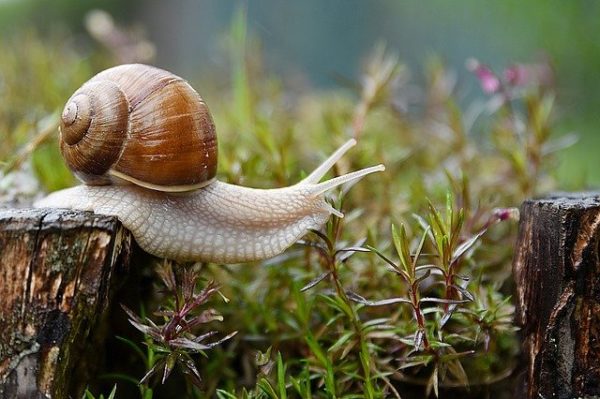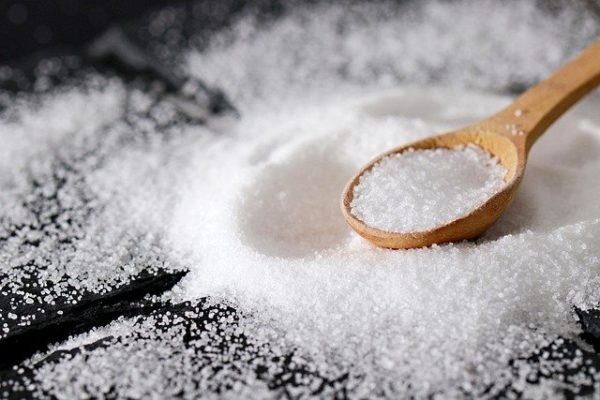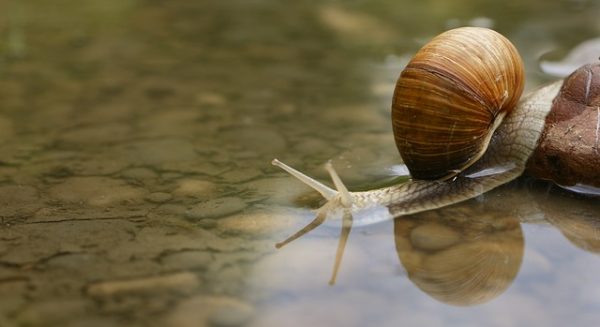How fun it seems to be a snail, living life in slow motion, simply crawling away from anything that comes your way, and stopping at nothing, only to die from salt.
Snails are invertebrate organisms, which means they lack a backbone and have a spiral shell, which is a rigid structure that helps shield their vital organs. The only five primary sections of a snail’s body are its head, neck, visceral hump, tail, and foot.
There are various types of snails, such as the garden snail and the sea snail, which are plentiful, yet certain species of snails are on the verge of extinction. They can be easily distinguished by their coiled and rigid outer shell. True snails have huge protective snail shells that they may withdraw into when attacked by predators. Land snails, freshwater snails, and sea snails are the other three types of snails. There are several kinds of aquatic snails as well.
Snails and slugs typically live for a year or two, but many may survive for much longer if they enter a sleep-like state known as estivation. Although many snails only stay in this form for a few months, some stay for a much longer period.
Table of Contents
So What Happens if You Salt a Snail?

Snails and slugs have an exterior mucous membrane that is smeared in water-based slime. The salt reacts with the slime, resulting in an extremely concentrated salt solution. When a highly concentrated salt solution is placed adjacent to a less concentrated salt solution, either water or salt will diffuse towards the salt or both. Because a snail’s membrane is more permeable to water than salt, moisture from its skin and tissues diffuses into the salty layer. As a result of the loss of moisture, they shrivel and generate a pool of salty water around them.
Salt has a powerful dehydrating effect. When anything can draw water out of damp materials, it causes the removal of contaminants. This is why salt has been employed as a preservative by so many civilizations across the world; the salt dries out the food, preventing mould growth.
When you pour salt on a snail, the snail is exposed to an extremely high quantity of salt. This high concentration of salt causes the water in the snail to escape, drying it up, desiccating it, and eventually killing it.
Unless other forces override the force of dissipation, it is a basic principle of nature that things strive to go from greater concentrations to lower concentrations whenever feasible.
Osmosis is triggered by pouring salt on a slug. “When a solution encounters a porous membrane,” osmosis occurs. The “solution” here refers to a homogeneous mixture of the salt you’re providing and the slug’s largely water-based interiors. The outside of a slug is a porous membrane, meaning that certain chemicals, such as salt, may readily travel through it. The salt content in the salt-water solution is greater than the salt concentration in the slug’s water. The process of osmosis then begins to dilute the solution and balance things out.
When You Sprinkle Salt on Slugs, Do They Experience Any Pain?

Yes! By doing so, you’re rapidly desiccating and effectively burning them, which certainly hurts. Slugs flinch when their eye stalks collide with something but have you ever seen what happens when salt is poured onto them? They writhe in misery and pain till they pass away. According to research, this isn’t just a mindless, emotionless activity; it’s a reaction to the agony they’re experiencing. They may be smaller and less complicated than humans, but they are nonetheless alive and experiencing.
Do the Snails Scream When You Put Salt on Them?
They might react in a certain way, but they will not scream as they don’t make much of a sound. That does not mean that they don’t feel any pain. We can’t really tell how much pain a slug or snail feels when stuck in salt granules, but they will struggle to squirm free while releasing a lot of mucus, so it is clear that the salt definitely hurts them.
How to Tell if Your Snails are Dead?

It is sometimes difficult to tell if your pet snail is really dead or not since they move so slowly or not at all. Freshwater snails in aquariums may appear to be dead, yet they are typically merely inert for many days. Due to the air in their lungs, snails occasionally float to the surface of the water. If you believe that the snail has died, carefully take it from the water and examine it. Leaving a dead snail in an aquarium might cause illness to spread. Examine the snail carefully before discarding it to check that it is indeed dead and not inactive by following some of these steps:
- Take the snail out of the water. Locate the entrance near the shell’s body. Take a good sniff of the shell. The snail has perished if the shell smells nasty or filthy.
- Take the snail out of the water. Locate the entrance near the shell’s body. Take a good sniff of the shell. The snail has perished if the shell smells nasty or filthy.
- Take the snail out of the water. Locate the entrance near the shell’s body. Take a good sniff of the shell. The snail has perished if the shell smells nasty or filthy.
- Take the snail out of the water. Locate the entrance near the shell’s body. Take a good sniff of the shell. The snail has perished if the shell smells nasty or filthy.
- Take the snail out of the water. Locate the entrance near the shell’s body. Take a good sniff of the shell. The snail has perished if the shell smells nasty or filthy.
Salting a snail may seem like a workable idea to get rid of them, but that is more hurtful to them and a cruel thing to do. The slug gets dehydrated, and any other rapid slug removal methods are likely to cause more harm than good. Instead of these inhumane methods, one can always try simpler and easier methods to get rid of the snails from their gardens by creating natural barriers. A few of these methods could be:
Crushed Eggshells: Crushing eggshells and scattering them about the garden’s perimeter may be quite useful since the jagged edges dissuade these garden pests. They would rather avoid the chance of injuring themselves by taking a different path. What’s more, these eggshells will degrade over time, benefiting the soil.
Slug Fences: Using metal fences around your plants may be quite beneficial, especially when ensuring that plants hanging over the sides do not develop shortcuts. The most effective barriers are those with a 45-degree angle.
Wood Ashes: Use wood ash to create a protective barrier around your plants. The more you utilise it, the better. The more effective the wall is, the more effective it will be. Remember that if it rains, you’ll have to replenish all of the wood ash. One advantage is that everyone who has a fireplace will have enough ash to utilise, which also serves as a natural fertiliser.
Copper Wire: A chemical reaction occurs when slugs crawl over copper wire, which successfully repels these garden pests. Copper is non-toxic to slugs and is simple to apply with long-term results.
These are a few of the useful options if you want to put up barriers to get rid of the snails, rather than killing or hurting them entirely.
No related posts.
